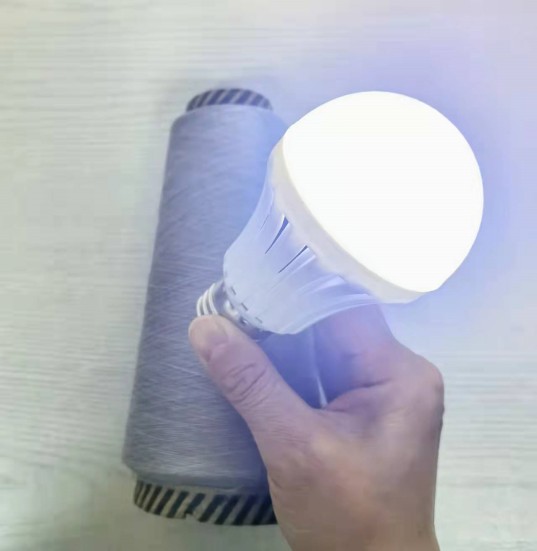In the competitive world of sportswear manufacturing, selecting the right fabrics can make or break your product line. As a manufacturer, your choice of materials directly impacts the performance, comfort, and marketability of your sportswear. Let’s explore the key factors to consider when choosing fabrics for your athletic apparel.

Understanding Market Demands
Today’s athletes and fitness enthusiasts expect more from their sportswear than ever before. They’re looking for garments that enhance their performance, regulate body temperature, and provide comfort during intense physical activities. Meeting these demands requires careful fabric selection.
Cooling Fabrics: A Must-Have Feature
In the era of climate change and rising temperatures, cooling fabrics have become a crucial feature in sportswear. These materials actively work to regulate body temperature, keeping wearers comfortable even in hot conditions.
Consider incorporating fabrics like IcSnow® Ice Cooling Anti-UV Fabric into your product line. This innovative material not only provides cooling properties but also offers UV protection, addressing multiple consumer needs with a single fabric choice.
The Power of Moisture Management
Effective moisture management is a non-negotiable feature in modern sportswear. Fabrics that quickly wick sweat away from the skin and allow it to evaporate rapidly are essential for maintaining comfort during workouts.

The 8C Microporous Moisture Wicking Fabric is an excellent example of advanced moisture management technology. Its unique groove structure creates a powerful wicking effect, outperforming traditional absorbent fibers. Incorporating such fabrics into your sportswear line can significantly enhance its appeal to performance-oriented consumers.
Breathability: A Key Comfort Factor
Breathable fabrics are crucial for maintaining comfort during physical activities. They allow air circulation, helping to regulate body temperature and prevent the buildup of excess heat and moisture.
Look for fabrics with 3D technology that creates a three-dimensional structure enhancing breathability. This feature can set your products apart in a crowded market, offering superior comfort to your customers.
Lightweight Materials for Enhanced Performance
The weight of sportswear can significantly impact an athlete’s performance. Ultralight fabrics that offer necessary functionality without adding bulk are highly desirable in the market.
Fabrics like the 8C Microporous material combine lightweight properties with high performance. These materials allow you to create sportswear that feels barely there, giving athletes the freedom to move without restriction.
Odor Control: Meeting Hygiene Demands
Odor control is becoming increasingly important in sportswear. Fabrics with anti-odor and antibacterial properties can give your products a significant edge in the market.
The Cooling Fabric with Anti-Odor, Antibacterial, and Moisture Adjustment properties is an excellent choice for addressing this consumer need. It actively fights odor-causing bacteria, keeping garments fresh even after intense workouts.
Durability: Ensuring Product Longevity
Durability is a key factor in customer satisfaction and brand reputation. Choose fabrics that can withstand repeated washing and wear without losing their performance properties.
Look for materials that maintain their shape, color, and functionality over time. This ensures that your products continue to perform well throughout their lifecycle, enhancing customer loyalty and reducing returns.
Multi-Functional Fabrics: Maximizing Value
Fabrics that offer multiple benefits can help you create versatile products that appeal to a wide range of consumers. The IcSnow® fabric, for instance, combines cooling properties, moisture management, and UV protection.

By incorporating multi-functional fabrics into your product line, you can offer increased value to your customers without significantly increasing production costs.
Comfort: The Ultimate Goal
While performance features are important, comfort remains the ultimate priority for most consumers. Fabrics that feel good against the skin and don’t cause irritation or chafing should be at the top of your list.
Soft, smooth materials that offer both comfort and functionality will help ensure customer satisfaction and repeat purchases.
Staying Ahead of the Curve
The sportswear fabric industry is constantly evolving. Stay informed about emerging technologies and new materials to keep your product line innovative and competitive.
From fabrics that adapt to body temperature to materials with built-in monitoring capabilities, the future of sportswear fabrics is exciting and full of potential.
Making the Right Choice for Your Brand
When selecting fabrics for your sportswear line, consider your target market, price point, and brand positioning. Different activities and climates may require different fabric properties.
Don’t hesitate to request samples and conduct thorough testing before making large-scale purchasing decisions. The right fabric choices can significantly enhance your products’ performance and market appeal.
So, choosing the right sportswear fabrics is crucial for manufacturing high-performance, comfortable, and marketable athletic apparel. By carefully considering factors such as cooling properties, moisture management, breathability, weight, odor control, and durability, you can create products that meet and exceed consumer expectations. Remember, the fabrics you choose are not just materials – they’re the foundation of your product’s success in the competitive sportswear market.




